|
-Pastor Melissa- Last year I participated in Inktober. For those who don't know, Inktober is a drawing prompt, where you get a different word to draw with ink. Last year I cheated. I used colored pencils. I also kept to a secondary theme. Last year, that theme was movies. It was a ton of fun, and I enjoyed spending a few minutes every day just drawing something small. This year I decided to explore my faith. To be clear, I'm not talking about general faith, or theology. This is what I believe and why I believe it. I often have reasons behind everything that I do. If you are interested in my process, check in every day this month. Day 1: DreamAs a child the only sermon I had read or heard from Martin Luther King, Jr was the "I have a dream," speech. More than that, I didn't get it. Not really. I thought MLK was relaying a literal dream. I thought he dreamed about multi-cultures holding hands and playing together.
It was only as I got older, that I realized the passion and reality in the message. When unity is merely a dream, that is not a celebration, especially if no one is working to make that dream a reality. In seminary I would read other sermons from MLK; sermons that asked the listener to act towards a just outcome. When I saw the word "Dream," I saw someone who knew what could be, and fought to make it real. I look up to MLKjr and put him among my heroes. -Rev Melissa Fain- Last week I picked up an art packet while subbing in an art class. It was all about parody art of famous work. I sketched through the pieces with the students, when I came across Son of Man. I had to do more, and I hope when you see my finished explanation, it will mean more. You'll see that I linked Son of Man with an analysis above. Below I'll give my analysis of my own piece, as well as a theological jump into the Creation Narrative. I highly suggest you click the link above and look at the original artwork first. I do not believe in a literal Garden of EdenWhy? There are multiple reasons. First, we have the issue of Moses. The first five books of the Hebrew Bible are attributed to Moses. It was believed, when he climbed up the mountain to talk to God, he wrote the Torah. That is why they are also called The Book of Moses. This belief, among Theologians, is contentious anyway because of a few reasons. One of them, I'll go into a little further down. Right here, let me say this: If Moses wrote the first five books of the Hebrew Bible, he also wrote about his own death and what happened directly after it. This, in and of itself, would not be a compelling reason for Biblical Literalists to follow my train of thought. They would see the power of God in giving Moses the story of his own death. I’m not going to go into whether knowing your own death is wonderous or horrific. Instead, I want you to consider the reality of what it would mean if Moses did write Genesis. If Moses wrote Genesis, it sets up a couple of potential scenarios. The first scenario is that Moses wrote down the spoken story that was passed down through the generations. This means the story didn’t have to be literally correct, as long as it was theologically correct to the people telling it. Truth comes in many forms, and not all of them are historical. Once again, not a scenario for Biblical literalists. If Moses wrote it, it was a story that was already incredibly old before it was finally written down. It didn’t have to be note for note, a recreation of how God created the Heavens and Earth. The second scenario is that Moses asked God how it all began, and God told the story as a parent would tell her child. Why would God talk to Moses about galaxies and the vastness of the universe, when Moses’ entire universal view was still that the Earth was the center of the universe? If we were told Moses saw the entirety of God, and not just the back side, sure, God opened Moses’ eyes to the wonders of all of us being made of stars. God didn’t though, so I don’t believe Moses knew. That means it’s okay to not see Genesis 1-3 as a literal retelling of how God made everything. FYI- I don’t believe Moses wrote the book of Genesis. Second, we have an authorship problem. This one is difficult to take in if you never had a minister open enough to talk about it. The Hebrew Bible, based on textual clues, were written by multiple groups of people. I’m going to go into two issues as it arises in the Creation narratives. The first issue is that there are creation narrativeS. (Yes, the ‘S’ is capitalized on purpose.) Just like there are multiple versions of Noah’s Ark, and no, I’m not talking about Gilgamesh or the multitude of flood stories across multiple cultures. I’m talking about multiple stories in the Bible. The first creation story goes from Genesis 1:1-2:4. The second story goes from Genesis 2:5-3:23. Like Noah’s Ark, the stories do not fit seamlessly. In the second story, humanity is created before plants, while in the first story humanity is not created until day 6. I just have a very difficult time believing God wanted us to do the mental gymnastics required to make the stories work together. I tend to believe they sit together, not as literal tellings of creation, but as stories of how ancient people saw the world. The second issue is that those narratives have different authors. There are times I am given a note, and the author doesn’t present him or herself in the text. I have to pull clues from the note in order to decide who sent the message. There are a few people who call me, “Lady.” These are secretaries from different middle schools, and also a friend at one of those schools. Then I can take clues from the note itself, and where I’m reading it to figure out the rest. Only my closest friends call me “Mel.” Only my sister calls me “Issa.” Only students and teachers call me “Ms. Fain.” The sixth grade hall at Austin Middle School just calls me “Fain.” And the list goes on. What names people are called help people know who wrote texts, and in this case, very very old texts. In the Bible this is true as well. In Genesis, the name attributed to God changes when the story changes. Most of us don’t realize as readers of translated text, that multiple names are used in the Hebrew Bible when we simply get ‘God.’ In the case of Genesis 1-3 the name of God changes from Elohim to Yahweh just as the first Creation narrative wraps up and the new one begins. Elohim, to the Hebrew people, means Creator God. Yahweh is not a name at all, but a placeholder. When one reads “Yahweh,” they should instead say “Adoni,” which means “Lord.” This change in name happens as the style of writing changes, or the stories begin to retell themselves. These are literary context clues, and point to multiple authors across many generations. All of this is why I don’t believe there was a literal Eve. This begs the question, why did I draw her then? My drawing: EveI also don’t think the forbidden fruit was an apple. Apples, especially the way we know them, wouldn’t have even existed in ancient Mesopotamia. It was Thomas Payne’s use of an apple as the forbidden fruit in his book “Age of Reason,” that caused me to put his writing down. This is actually the reason I used an apple in my drawing.
Magritte named his original art, “Son of Man.” With the “Human One,” or “Son of Man,” being Jesus Christ, it’s important to know the original is a self portrait. Just knowing the name makes me incredibly uncomfortable. Here’s a guy, subtly calling himself Christ, with the forbidden fruit in front of his face. The apple sits in front of his face, because it makes us want to remove it. We wouldn’t care if the apple sat on the wall. We care because we are told this is a self portrait, and his face is being obscured by a fruit. Also, he put the ocean behind him. Whether he realized it or not, the oceans to the Ancient Hebrew people were the place of uncreation. In Genesis, God didn’t create everything, but left chaos in the waves. Also, according to scripture, the waters in the sky will not fall until Noah’s Ark, so it’s also fitting that the sky is filled with clouds. With Eve being my subject then, it only makes sense that all of Eden would be on the opposite side of the frame. We’re forcing our gaze on her, when all of God’s creation is just behind us out of view. In my drawing, Eve doesn’t want you looking at her the way we all look at her. Naked. Her hands try to cover her body, not because God is looking, but because we are. Her right hand sometimes flips out, depending on the distance you look at it. It makes her both guarding and protecting. She’s afraid of you. Meanwhile, she’s not afraid of the snake just behind her. She is not afraid of the chaos held back by a short wall. She’s not afraid of God’s wrath laying heavy in those clouds. Those are all God. She fears us, and what we’ve turned her into. It’s iconography, but it’s all wrong. Icons are supposed to be able to look at you, but the sin keeps our eyes from meeting. Her sin or our sin? It’s a great question, because the apple would be ours, not hers. The lines should be up and down to connect heaven and earth, but the lines run sideways, breaking that connection. You should leave the piece no longer wanting to objectify her, but to see yourself, and want to turn around and face God. Then you can ask yourself this question. Can you? -Pastor Melissa Fain- I know it’s been a bit since I’ve shared with you. I’ve been on a very long sabbatical, working through some spiritual and emotional things. As this is the week I’ve chosen to come back, I wanna share a few of the truths I’ve learned from my time away. We need to normalize speaking honestly about our emotions- both good and bad.I chose to be honest about my struggle with Fig Tree Christian. While not vocal about it, I knew what people wanted. They wanted me to be Osteen level gleeful in everything I do. Okay, let me back that up just a little. Modern Evangelicism has made you believe you want a leader who always has their stuff together, and always sees the better side of life. If you shine a light into the light, guess what you’ll find? Light! Only that’s not real. That’s only half of reality, which is why I chose honesty in all things here. I’m not called to be a mega-pastor, I’m called to be a shepherd. It is more important to me that I emulate the reality of being spiritually lost so it can be followed, than to hide away when those times happen. If it made you uncomfortable, GOOD! Guess what? Working out our emotions is still working out, and working out, when you first start it is uncomfortable. Fig Tree Christian is not a church.It might do church kinda things, like have worship, but this ministry always fails when it gets shoehorned into being a church. I get why it happens. It’s difficult to understand how to interact with God when the only way we’ve ever known has been in a church. I've found God more in the last six months in my creativity outside of Fig Tree because it is outside. God has given me the creative expression to play. How exciting is it that God has asked me to leave the building with the mandate, “Find me, and when you do help others see where I was, and then find me again!”? Do you understand that all that is lost if Fig Tree is anchored into being a church? Easter is still disheartening.My biggest revelation is right below this one, but let me sum it up into one sentence: I was passively pushed into the pulpit in an attempt to understand what I was doing. It’s heartbreaking to be put in that position and then have the people who put me in that position not show support on Easter because they want the bigger production value on the biggest Christian day of the year. That’s why the Easter livecast was only a couple of minutes long. I was passively pushed into a space, where those who were passively pushing had no intention to stay. That would hurt you too. I’m called to seek mutuality.Fig Tree kept being manipulated into being a church because the process wasn’t mutual.
In some cases, this fault was with me. I was very protective of this ministry, and didn’t want to cede control to someone who didn’t have a vision for what it could be. That simply makes sense. As a ministry it was a newborn, and needed constant supervision. There were a couple of times it could have been destroyed had I not stepped in and took it away. In other cases, it was those who wanted to help. Once again, I return to Modern Evangelicism. Since the 1950’s, churches were formed by a charismatic male, seeking congregants. Whenever people wanted to support Fig Tree they did it by following the formula: be a congregant. Only, the congregant/minister relationship is not mutual. It’s very much a follow the leader type of situation. It is such a passive way to support, I didn’t realize how drastically it shifts the direction of a ministry. I just saw I was the only one talking/writing/designing. What I failed to see, was anyone who said they wanted to be supportive, was taking the congregant role and watching/listening. It created a pulpit when Fig Tree was never meant to have one. It was this inability to see the stubborn nature of “help,” that kept me from finding true mutuality. I realized I needed to seek situations where people were not thinking about church. I recently found a couple, and they are situations where both parties are allowed to have creative agency, and neither side is more important than the other. So don’t ask me what we’re doing mutually, because the answer will be nothing. That’s forcing me into a traditional pastor role, and I’m a shepherd. In other words, I'm now ultra-aware when "help" means throwing all the work back at me, to leave me with all the creation. I won't be the Little Red Hen anymore. It's not fair to you. You can't partake of that communion, unless you help make the bread. To passively push me into the building, up at the pulpit, you are losing out where God has asked me to play. The building is stale. The gardens are outside. I want to play outside, and maybe it won't be with you, but it won't be alone. -Pastor Melissa Fain- I have been inundated with reading material as of late. My eldest gave me The Handmaid’s Tale for Christmas, and I found its sequel, The Testaments, on clearance. I devoured both. I followed this up with Sinners in the Hands of an Angry God, a 25 page exploration of damnation. Our review is on my next read: Kingdom of Women, but I also read Out of the Dust, and I’m currently returning to The Screwtape Letters. (That’s if you’re interested in reading anything I’ve been reading.) Perhaps it is a desire to devour the written word after spending a month studying for a very big math test. Perhaps it’s me choosing to read anything but the book I eventually put down to teach art: Crime and Punishment. (Gotta finish that one next.) No matter what it is, I knew I needed to write this review. Synopsis (Without Spoilers)There are a few story lines converging together in this. There are two worth noting in this post: 1) Averil Parnell becomes the world’s first priest in the Roman Catholic Church after her fellow seminarians are gunned down and she survives. I have some things to write about this below (with spoilers). 2) Women are done not being heard when it comes to abuse, rape, and inequality. They take matters into their own hands, and a group secedes from the Union to start their own country. At the same time, there are a group of vigilante women who are enacting justice towards fellow women who were raped and/or killed by men. How to read it (With Spoilers)I’m sure my male readers are seeing the synopsis and just “noping” yourself out of it. Please hear me out before you do that. In my opinion, the author, Rosalie Morales Kearns, creates a modern feminist lament. I put this text right next to Psalm 137. They are both dense and difficult reads. A year ago, almost to the day, I wrote a Tuesday Review of Professor Glenn Pemberton’s book: Hurting With God. I said he lost the tension when it came to Psalm 137. That comment is important to this book, so let me quote it below: “If I could summarize [Hurting with God] in one sentence it would be this: Trust God enough to speak the truth in your prayers. [Glenn Pemberton] couldn’t find the truth in Psalm 137, because he only heard the words being spoken, not the meaning beyond them. I do invite you to read what I wrote on his take on Psalm 137, but I have one more greater point... Talking to God has to start somewhere. It might even start with a lie. If we are so afraid that the only words spoken need to be truthful words, we could scare people out of praying all together. I would summarize prayer in this way: Prayer is bringing yourself, in all that you are, before God in sacrifice.” Tuesday's Review: Hurting with God Psalm 137 doesn’t mean God condones bashing babies heads against rocks. It does mean, God hears our yowling pain, and we have the freedom to speak with our souls as our words can say some terribly hurtful things. God is big enough to take it. Kingdom of Women ends with the complete destruction of men. It’s not realistic if taken literally, but it is real. It’s true in the exact same way Psalm 137 is true. If taken as a true lament, it speaks with women, and speaks to men. That makes this a very good book. Aside: Speaking as a woman in ministry and Scouts BSABefore I get into this- I did not see this book as literal. I saw it as one sees a fable or morality tale. It’s not meant to be taken literally. What I’m about to write isn’t critiques, as much as how I feel a literal experience would go differently.
If the Roman Catholic Church chose to ordain women, they wouldn’t “defrock” her like they did to Averil. They would bury her. They would put her somewhere where no one would be able to hear her sermons, or know what she was up to. To take away her standing would suggest they were wrong, and they would attempt to avoid appearing anything but the God Ordained Church™. Speaking as a woman who is ordained, I feel more ignored than I do expelled. Expulsion gives you something to work with. It’s a physical action that can have an opposite and equal reaction. Ignoring, on the other hand, has no momentum. For example: Back at the end of 2019, Fig Tree Christian and myself left the Christian Church (Disciples of Christ). The Christian Church ignored it. Like, I still get “giving packets” from the Church they ignored it so fully. Now, not only am I disconnected from the denomination in a self-acting move, but there was no reaction to it. They kept me for their numbers, and took away everything I could have gained from it. So much so that in 2020, when people were searching where to find Fig Tree Christian, it listed another church we discontinued meeting at. They reaped our evangelism. That’s what would have happened to Averil. She would have been made obsolete by the system that claimed to love her. Also an example: A few years back, the BSA decided to include girls in their scouting program. I’ve written so much about this, including the Scout Bathrooms. Including women and girls into male programs does not automatically create equality. The very foundations need to be moved for equal treatment. In the case of the Council camps, the bathrooms were made for the boys. It’s much more difficult for the gals to camp with public restrooms still being for the boys. And yet another example: I experienced this as a seminarian, as the building for the seminary was built for men. Try being a pregnant woman when there isn’t a restroom on your floor for women. Candler fixed this with a new building, but my first year still felt incredibly exclusionary. You just don’t understand how much the problem can and is ignored. I say this, because being ignored often takes away your power, and allows the offenders the freedom to move on. In reality most failure is accomplished through ignorance, not action. The world is destroyed by those who fail and hear the yowling laments of the oppressed. That is all. -Pastor Melissa Fain- What is ministry? That question has taken center stage in my mind as I meditate. For a decade I have written here on a regular basis. The meditations side has existed like clockwork, as I have been better about keeping up with it than most paid, brick and mortar, ministers. As of late? My posts are starting to slow, as I might write one week, and illustrate the next. The longer I write, the less likely I think you are to read. That means it’s no longer an effective form of ministry. Something about this site has to change. I have also kept a weekly worship. Even before Covid, there was online worship. It felt necessary at one point. It feels deserted now. Self-IndulgentThe internet is a very selfish place. I’ve always known that. It’s the piece of the puzzle Mark Zuckerberg fails to see as he thinks Meta will be the next new place for community. A true community gives and takes. It’s reciprocal. The internet just takes. Even those who want to be taken. They, I guess I should say we, want to be taken. We turn ourselves into a commodity in the hopes that it will result in us being “given.” What, you may ask? Perhaps fame or fortune? The more we want to be taken, the more the internet loves us. If we never ask for anything in return, there is no shame in taking, and ideas are stolen and reused without permission. Even though it will destroy the person, the internet is okay with the pillaging. They don’t have to see the remaining husk of the person, and a new person wanting to be taken will willingly take the previous one’s place. I was intentional with my language. Yes, there are people who go online to give something. That relationship is almost always the internet taking from them and giving nothing back in return until the person must quit before they are destroyed. It brings me back to my question: What is ministry? Specifically, online ministry.I know I’m painting a broad stroke here, but I’m going to say it. Most churches are very selfish on the internet. I’m not saying that, like they are some digital Scrooge that takes from the less fortunate with miserly glee. Their selfishness comes from an antiquated view of the world wide web. Most churches began using the internet back when it was simply an online bulletin board. The whole purpose was to post what was important, and leave. There were no interactions. It was also free advertising, back when many churches were paying $100s to put events in the local paper. The internet was giving churches something! Greedily they gobbled it up, without considering how this introduction to the internet would inform how they would use this resource moving forward. You would think, after Covid, they would be forced to see their internet habits and learn healthier actions and attitudes online. Instead, they continued to be insular. Once again, I don’t think this is some plot to hoard their resources and take up a miserly duty to be visited by three Spirits every Christmas Eve. It is more like wearing blinders they don’t know they have. They saw how difficult it was to worship online. Instead of asking, “How do we make this experience more interactive for those unable to come to church?” they thought, “How do we get back to in-person worship?” Instead of seeing the person who logged on to watch a church’s livecast, they see a possible future donation. The trauma of the person ignored for the number in attendance. Hardly no one is going on Reddit, and looking at /r/Christianity, a place many broken by the Church find their first home. No one is wondering why they are still losing members, and what that means to God’s call on the world. About a decade ago, I heard a very important minister yell, “I didn’t stay here to watch the church die!” He meant that specific church, and the words have stuck with me, as I feel many ministers are at least thinking about it as they continue their insular practices. When I was looking for churches to sponsor us, there was one church that began looking possible. It turned out, they wanted to gobble up the resources and destroy the seed. It would prolong their death, while destroying us immediately. All taking. No giving. But online ministry!Look at me! I’ve once again written pages of text for no one to read! What is my problem?
I needed all of that, to explain why part of online ministry needs to be about giving. I mean, the church needs to give. I don’t mean we need to give to the church. The physical churches are hemorrhaging. Even the ones who think they are doing well, are only taking in the leftovers from the smaller churches who are already dead or at death’s door. There is no growth in the church today, only the illusion of growth. We also need to be creative, and creativity is severely lacking globally. We need groups of people just shooting ideas, and trying them until something sticks. It’s not rocket science, but it is incredibly difficult when we’ve replaced education with standardized tests. Right now, that’s what I’m trying to figure out. Not the answers, but how to get the people so we can find the answers together. How to share our resources, and innovate. I have great ideas. I want those ideas to be real. Right now, I am stuck with the dying word, a few pretty pictures, and worship. -Pastor Melissa Fain- Almost every week, I purchase apples for school lunch. Sometimes, a brown spot appears after I purchase, and I remove it, and cut it into slices. Last week, there were these two apples that didn’t really go brown, but went translucent. They looked so interesting, I took a picture of them before I chucked them, and promised I would illustrate them. I love them, because It’s impossible to see they’ve gone wrong. It requires picking it up for closer inspection. Then an idea hit me, and I was drawing away. May I introduce Forbidden Fruit. The Apple and the Age of ReasonAbout a decade ago I picked up Thomas Paine’s Age of Reason. It is a case against Christianity in particular. I like to read these kinds of books, because it sharpens me, like metal on a whetstone. This particular work was not the whetstone I was looking for. In any book, there are certain key phrases and words that tip me off that the author did not do his/her research. One of those words is “apple.” There were no apples in the Eden narrative. There was a forbidden fruit, but that fruit remains ambiguous, and I believe on purpose. When the word, “apple” is used I hear that the writer didn’t consult the source material. This is what ultimately made me put Age of Reason down before I finished it. His problems were often extra-Biblical. That becomes a problem when the target is supposed to be the Bible. Thomas Paine is actually the reason I chose to read a Ravi Zacharias book. How was I to have any opinion on the man at all if I hadn’t read any of his words? I saw what it looks like when speculation is used to rail against a subject. Speculation can obliterate any self-made strawman. It is only research that destroys the subject at hand, if the subject is capable of being destroyed. Therefore, the apples in my illustration have become my personal strawman. They are drawn up front, unknowingly rotting away, while the actual subject is tucked away behind them. Seeing the Garden of Eden like a story a parent would tell their child.There are a multitude of ways we can look at the Creation Narrative, but two I want to bring to focus. Either you see the Bible as literal or not. I’m using these words loosely here. There are gradients to these two choices. I don’t want to discount the multitude of belief systems. It’s just if I spent time going through the gradients I’d be writing a book instead of a post. Let’s keep it simple here. I’m in the “not” camp, because I am more concerned about the events that lead to the story. The Biblical stories exist for a reason. Not every story is meant to be taken literally. The parables, for example. Creation too. Literalists believe the Creation Narrative is literal and happened around 4000 BC. Then, 2,500 years later, here comes Moses. I mention Moses because the first five books of the Bible are attributed to him as the author. Going back to Thomas Paine, he found an issue with this. How could a very well educated Egyptian end up being the one who wrote the Creation Narrative? As much as I believe Paine should stay out of religion, it’s not a dumb question. A literal approach says that Moses talked to God, and while with God, Moses wrote down the Creation Narrative. 2,500 years later. More importantly, at least 3,500 years ago. What did we know as a people 3,500 years ago? God was above. Death was below. The Middle East (to the Ancient Middle East) were the only known people in the universe. Let’s say Moses is on the mountain with God and asks the question: “How did all this come to be?” You think God is going to talk about cosmic explosions, and atoms?! Do you actually believe God would talk at God’s level today?! God would talk to Moses in a way Moses would understand. I can see Moses writing Genesis 1. I can also see the Priests coming in behind them, and putting their known creation story in, of Adam and Eve. (There are many reasons to believe Genesis 1 and Genesis 2 were written by two sets of authors, none of which I’m going to go into today.) Being a Woman taking back Adam and EveI’m a human, who has human needs. Maybe that’s crazy to consider. I want to share my opinion, and at least know my opinion was heard. Eating the forbidden fruit did not bring death, but the knowledge of death. More than that, it was a tree put in a centralized place, and focus was drawn to it. It would be like telling a toddler, “I’m putting these newly baked cookies in the middle of the table. Don’t eat a cookie!” Y’all! I’m a mom, so I know how this ends, but scientists have also run tests on kids. The kids are going to eat the cookie! In a literal Creation narrative, God implicitly wanted them to eat the fruit, or God was a moron! As for me, I’d like to believe God had more intelligence than I did in my early parenting days. Eden was a place that was comfort for both Adam and Eve, and eating the fruit (learning the knowledge) they had to leave their comfort and struggle. It was turning their knowledge into shame that was the sin. Getting to that picture I drewThe books are the subject.
I put the books in the kitchen, because traditionally you are more likely to find a woman in a kitchen over and beyond a man. Also, we’re consuming the Word. Theology and Faith are named like old friends. Eve must eat it before she feeds it to Adam. That’s where the story falls apart. Adam would necessarily need to leave his comfort to eat what Eve is serving. It’s not Eve’s comfort. Eden was created for Adam, and Eve is simply a partner to Adam’s land. To eat what Eve is serving is to know this, and realize they have to make a new land that belongs to them both. The ultimate power is not Eve’s which is what makes this picture so bitter. It’s a beautifully bright possibility. That is all. -Pastor Melissa Fain- Happy New Year! Can you believe we are not even a week into 2023?! It feels like much more time has passed. Did you make any resolutions? Resolutions are silly in a way. It’s a promise to do something different because the planet made an entire rotation around the sun. Seriously?! Why do we wait until January to resolve to change our ways? Because of December. I’d surmise many of us are not really resolving to change anything for good. We are actually resolving to undo the frivolity of December, and that will take 2-3 months. I’ve found, as I’ve entered middle age, that I’m not as tied to where we are in relation to the sun. I want to celebrate people on random days. I want to resolve to change when I realize I need to. The Magi: Journeying after the party was over The Magi, or more commonly known as the wisemen, were not only fashionably late to the party. They arrived after the party had concluded, everything had been cleaned up, and there had been two more parties since. See, Jesus was about 2 years old when they finally made their way to see him. Either that, or Herod waited years for the Magi to return with the news. No matter how the events did or didn’t take place, they didn’t just resolve themselves all at once. We’re talking like Peter Jackson’s, Lord of the Rings bajillion resolutions. Mary and Joseph get a resolution. Then the shepherds get a resolution. The angels joyfully pop in like the hobbits to be part of whatever resolution they want. All those resolutions conclude, then another more somber one concludes it all. In the Christian calendar, Christmas doesn’t even start until December 25th and goes until January 6th, 12 days later. This is where the Twelve Days of Christmas really comes from. (The link is my favorite version of the song. You’re welcome in advance.) It’s on that 12th day, on the Christian Calendar, the Magi FINALLY get their resolution. After the baubles have been packed up. After you are back to work, and trying to figure out the remainder of your kid’s school year. When you are trying to work off that frivolity, not go back to it: that’s when we are told to remember the Magi’s trip to find Jesus. That’s also what makes it so special. You have outsiders coming into the story, and God still gives them time, even though they are late. January 6th is a reminder to not forget. Even if you got your frivolity and are ready to move on, maybe others are not. Maybe we shouldn’t leave the story until everyone gets their resolution, even if it appears a little late. The foreign outsider is part of the party. Now the story is complete! Merry Christmas! Reddit subreddit /r/Christianity drama
-Pastor Melissa Fain- Love, when in it, is easy.
Don’t let anyone who just gets love try to teach you love. Either they don’t really get it, and they are living into the simple joy thinking it is love- you know, like the Whos from my Joy week, or they are some sort of love savant- and incapable of explaining what comes to them so naturally. Still, love, when in it, is easy. It’s just getting to it, and staying in it that’s hard. There is a moment. A moment where love just works. Everything falls into place, and that moment is effortless. Then, like a surfer on a great wave, the wave begins to erode. Love, while easy when in it, is work in every other way. Don’t think because you have to build and create to make love work, that you are on the wrong path. Love is work. There is no path where love is all easy paths and smooth sailings. At some point, you will have to struggle. There is something that makes love different than any other type of struggle. A healthy love will make the struggle worthwhile when reached. Eventually, the struggle becomes part of being in love too. Love cannot be achieved alone. Even loving one’s self is a statement of how you choose to relate with those around you. Every act of love is a statement of your place in a community. When you choose to love someone and someone doesn’t return that love back, that is not love. Hope, peace and joy can all be individual experiences, but once you seek love, you are seeking it with a person or people. It cannot be forced. You can’t force someone to give the same amount of work you are giving. Once you force someone into such actions it’s no longer love, but obedience. The key to God’s love is our willingness to be part of it. God’s love is a chord. Like Karl Barth suggested, God’s love is for all time to all peoples. No matter who you are, or what you believe, God loves you. That’s where the connection to Barth ends. I believe the chord can either be severed or held by us. That’s where our choice comes in. If we choose to hack that chord to bits, well, that’s a choice. If we choose to live in ignorance even though we know the chord is there, well, that’s a choice too. If we choose to love back, that’s a choice that will be work. Not choosing to take that chord doesn’t mean you are excluded from some fancy club, and I now need to snub you. That’s not how this works. That’s between you and God and no one else. I won’t force you to do anything because that turns God’s love into obedience, and in that, it breaks. God’s love is free to all, and that’s it. God’s love is easy, but it’s also tons of work. Reddit /r/Christianity drama -Pastor Melissa Fain- I’m at the point where syrupy faith is just too much. I’m immediately skeptical of worship that is all uplifting, marshmallowey, joy. That’s not how the world works, and in a world where it seems everyone is on an epic struggle-bus, it all seems rather fake too. I think that’s why this year has been the most difficult to get into the “Christmas Spirit.” It feels fake. I can’t “Go Tell It on the Mountain.” Just, no. I can’t sing, “Joy to the World.” Let’s not. I just wanna survive everyone else’s frivolity, and move on. In a very real way, this year, I’m connecting to the Grinch. The Whos Earn NothingHave you ever realized the Whos in “How the Grinch Stole Christmas” have no story arc at all? They gain nothing they didn’t already have at the beginning. They simply exist for the Grinch’s foil. The Whos have a naive joy, not grounded in anything at all. Meaningful joy will always be born from hope. It’s like simple versus complex sugars. Just feeling happy is a simple joy. It’s like getting a piece of candy. It tastes good. You enjoy it while it lasts, but it doesn’t fill you. Coming from grief and heartbreak with a hope given by God is different. When a person sees the first signs of that hope being fulfilled, it brings true joy. It’s a joy that looks strange because to everyone else it might not seem like something to be happy about. It’s like getting a bowl of pasta. It is filling and the energy lasts. The sugar is still there; it just has to be broken down first to get to it. The Whos had simple joy. Not bad in small batches, but if it’s the only joy you get, eventually you don’t understand why it’s not filling you. The Grinch earned a complex joyThis guy was living on a cold, dark, lonely mountain. No one cared about him. No one tried to engage him. More than that, the Whos simple joy was mentally hurting him. Let me unpack that statement just a little. In a community, we want to believe if an action feels good it must be good. It creates this illusion that if the outsider would only see the system the same way the insider sees the system, they too would want to be part of it. That phrase, “Taking candy from a baby.” It’s said because it implies doing something like that is easy. It’s not easy. The baby screams, cries and draws as much attention to him or herself as possible. Whenever that phrase is illustrated in a show or movie, you usually see the person quickly giving the candy back by the end of the scene. At the same time, who is giving candy to a baby?! To the baby, it seems amazing! How could all that sweet be bad? Only it is bad, especially for a baby, and in unfettered doses for everyone. That’s the deception. Those partaking of simple joy at all hours all the time are gaining nothing of substance, but they don’t realize it because it’s all so sweet. Those who finally crashed from the immense joy-high, can actually realize how dangerous it all is, but it’s impossible to tell those who are still living the high. Those who have felt the joy-crash can actually be reliving it when they see others with that joy-high. Moving on. The Grinch came from somewhere. There have been two movies that have tried to unpack it. No one has suggested that he might just be a Who who suffered a joy-crash. After all, from his mountain, he knows exactly what they do in their houses, almost like he lived there once. He can’t hear the constant singing because it’s a reminder, and eventually that reminder turns to annoyance, which turns to pain. His hope is to destroy what pains him. His solution, while not a good one, is to take away all the things that remind him of his pain. He wants peace, and he’s willing to silence it all to get it. When his plan still ends in Whos singing joyfully, he suddenly realizes he could have real joy. With that, his real hope is fulfilled, he finds peace in his place, and realizes the true joy. That’s why his heart grows. All those pieces must come into place for the love to be found. It’s that complex joy that allows him to find community again. It’s a processI don’t think the Church is doing anyone favors by feeding her congregants simple joy week after week. The Church should be the home for the weak and wounded. It’s a place for all those who are living in the joy-crash. Instead, the Church has become the absolute last place for those people. We are ostracized to the mountain, being told we are choosing the mountain. For the newbies, we are like babies, unable to verbalize what is happening to us, and why we are being pushed away by those we thought loved us. For us seasoned Grinch’s- some of us tried to burn it all down. Some of us simply moved on. Others, like myself, are worried about new joy-crashes, and desire to help those who haven’t crashed, see those on Mount Crumpit. It’s a process. This year, I’m surrounded by the joy-crash. Not my own. That’s over a decade old at this point. It’s all the ones who just thought they could go back, and are finding the simple joy doesn’t last the way it used to. I want to be the Grinch. I want to take the candy from the baby for the sake of the baby. I want to help others find a more complex joy that leads to real love. But, like I’ve already said- it’s a process. Reddit /r/Christianity post drama
-Pastor Melissa Fain- I am not a person who likes to wait or be patient. I take that back. I am a person who exercises a mountain of patience on a daily basis, but that doesn't mean I like it. It reminds me of when I was late elementary school age. It was understood, if I put food on my plate, I had to eat it. With that understanding, I never put cooked veggies on my plate. I didn't want them, so it was an easy choice to not add it to my dinner. That was until my step mom saw I wasn't eating any veggies, and amended the house rule: You have to eat everything on your plate, and that must include cooked veggies. That's when my eating habits changed. Instead of eating little bits of everything, I ate what I hated first, and then the next hated, and so on and so forth, until I only had what I liked left. Like I said about patience- I didn't like it, but I did it. In my high school years I was always willing to share candy or treats . Just, don't ask for some if I had been eating it for a bit. Then you were asking for the best of the best, because I had already eaten the candy I didn't like first. When it came to treats, I had to change my eating habits again in high school. I would put aside a couple of pieces I didn't like so I could offer them if someone asked. If this is all beginning to sound a bit extra, you're right. I was extra. I didn't want to look like I wasn't generous. I didn't want to be stuck giving away all the good candy, when I had eaten all the bad pieces first. Let's be honest, it was my candy I was sharing. I was willing to change the rules as long as it didn't change my outcome. I got the good things I started with. The Wait is on!I noticed something very interesting during COVID restrictions. People don't like space. Specifically, people don't like space when standing in lines. There's this anxiety that flairs up that makes the average human desire to draw closer to the person in front of them. It's like standing 6ft will make someone cut, and they'll lose their space. I was in heaven during social distancing. I don't want to feel someone's breath on the back of my neck. It was good that people were far enough away that I couldn't smell them. Why are we wanting that back? I digress. I think similar ideas exist with my candy and with standing in line. People in line earned their place in line, and there's this fear of having that work stolen. While I liked all the candy I had eaten, I earned the really good candy by saving it until last. I mention these examples, because that's what makes peace so difficult. There are those who haven't had, and those who are about to earn. There are no good choices in that formula. Often times, those who are about to earn choose to withhold assistance because of that four letter word: FAIR. Perhaps, if we are serious about peace, we should start talking about fairness in a new light. Certain "lines" don't exist anymore. The rules are changing, and that doesn't negate those who put up with crap and feel it's there turn to take the lead. What we may call "cutting" by old standards, might have been a different "line" for that person. Ultimately, the rules are made by those who have been "in line" the longest. It's nearly impossible to change a system willingly, when the people making the rules, just want equity for what they already paid. Peace is always an option, but that doesn't make it an easy one. Reddit /r/Christianity
|
Categories
All
Archives
October 2023
|


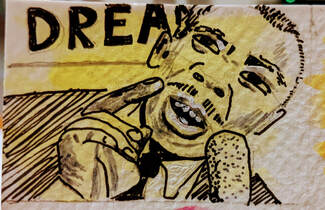
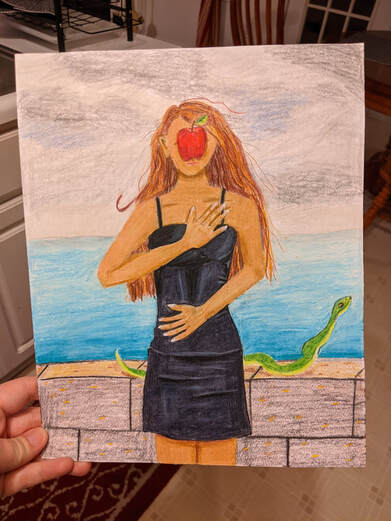

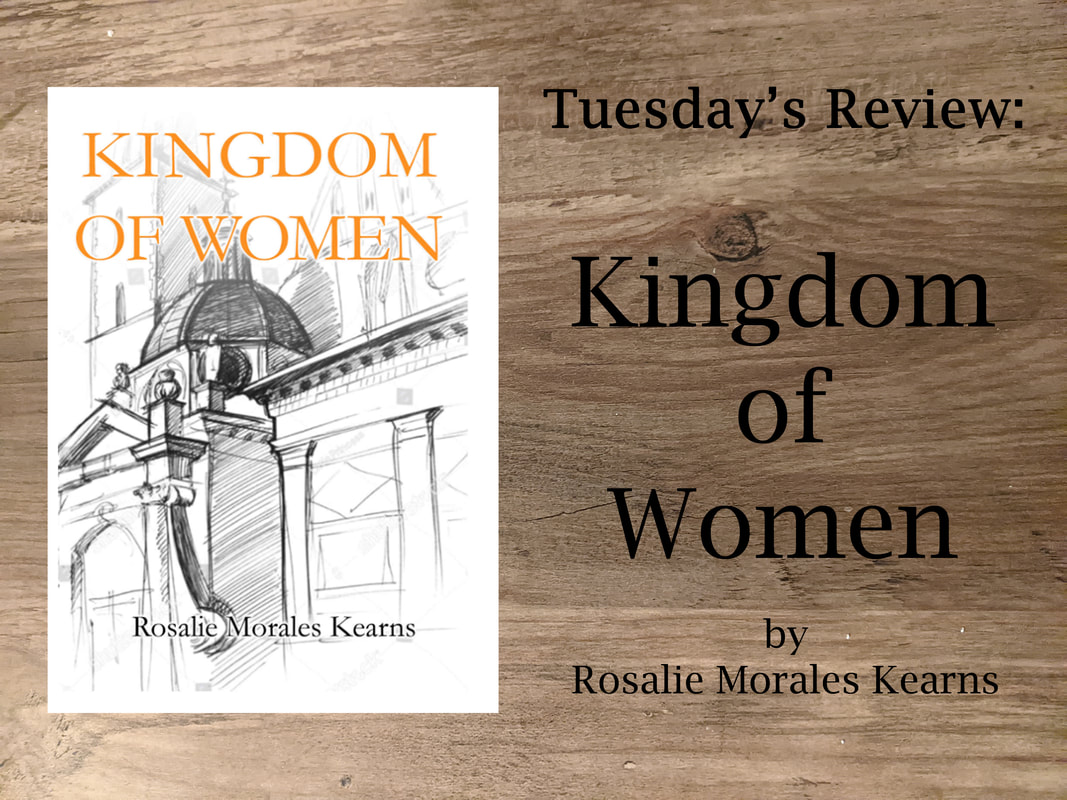
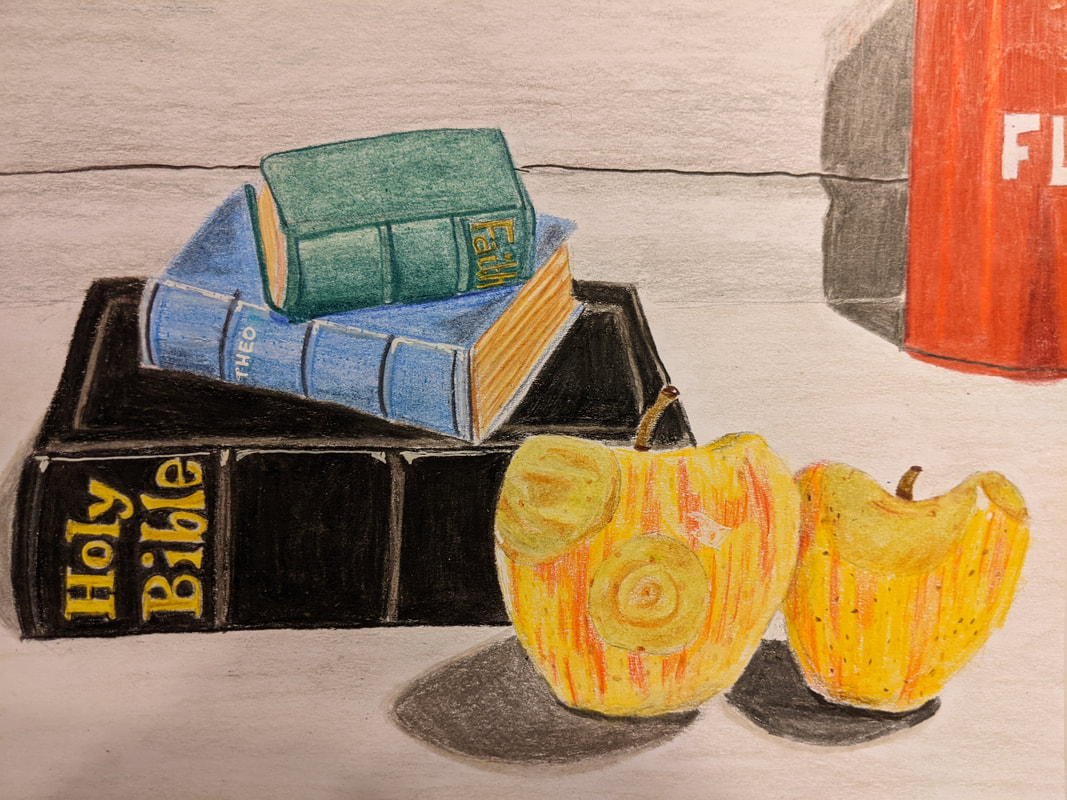
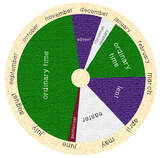

 RSS Feed
RSS Feed